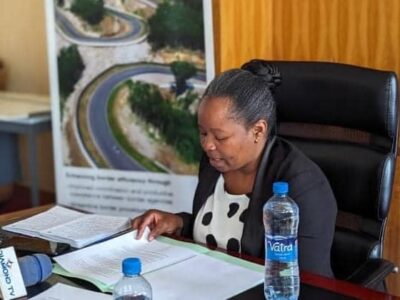The Zambian government has launched the National three million metric tonnes copper production strategy by 2031 and the National Critical Minerals Strategy for the period 2024-2028.
These initiatives aim to significantly increase the country’s copper output to three million metric tonnes annually by 2031.
Mines and Minerals Development Minister, Paul Kabuswe, unveiled the two strategies in Lusaka on Thursday, highlighting their role in enhancing copper production, creating jobs, and fostering innovation within the mining industry to drive economic transformation.
“The strategy transcends mere economic objectives, reaffirming the government’s commitment to sustainable, ecologically, and environmentally sound mining practices,” Kabuswe said.
To achieve the three million metric tonnes target, the strategy outlined eight specific objectives, including creating an enabling environment to ramp up copper production from all expansion projects across brownfield mining companies.
It also aimed to monitor the performance of greenfield projects and advanced exploration ventures with defined mineral resources, as well as exploit copper from decommissioned mineralised tailings and slag dumps.
Kabuswe emphasized that the strategy would facilitate the development of the artisanal and small-scale mining sub-sector and improve regulation efficiency and transparency in the mineral value chain, focusing on licensing, safety, health, and environmental standards.
The plan also includes conducting nationwide high-resolution aerial geophysical surveys, scaling up investment promotion in exploration, mining, processing, and value addition and undertaking capacity building, research and development in exploration and mining technologies.
Read More: Zambia increases stake in Lubambe mines to 30%
“The strategy prioritizes re-engineering mining sector operations to optimize production, promote transparency, and ensure effective management of waste disposal to reduce the ecological footprint,” Kabuswe stated.
“It also aims to enhance technological innovation, skill development, infrastructure, and global cooperation to support sustainable mining.”
Kabuswe also underscored the importance of the National Critical Minerals Strategy, which focuses on non-traditional minerals such as rare earth elements, graphite, nickel, and lithium.
The strategy outlined interventions to adopt and adapt to technological advancements in mineral development and management, including artificial intelligence and robotics.
WARNING! All rights reserved. This material, and other digital content on this website, may not be reproduced, published, broadcast, rewritten or redistributed in whole or in part without prior express permission from ZAMBIA MONITOR.












Comments